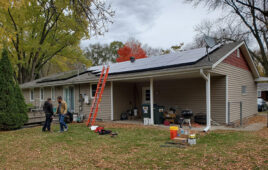Update: Gov. Phil Murphy signed the bill into law on Nov. 8
Last week, the New Jersey legislature passed A3352, which will require new warehouses to be solar-ready buildings. If Governor Murphy signs this bill into law, new warehouses that are constructed on or after July 1, 2022 will need to include a building design that’s optimized for solar installations.
The bill defines warehouses as any building that is 100,000 square feet or more and primarily used to store goods for resale.
“We commend Senator Smith and Assemblymen Kennedy, Stanley, and Calabrese for passing A3352, a commonsense bill that will make sure these massive warehouses use designs that facilitate clean energy use. Solar-ready buildings can significantly reduce the cost and time associated with retrofitting buildings for a solar installation. These are modest changes to building designs, but they can significantly impact a building’s ability to easily and cost-effectively transition to solar and storage,” said Scott Elias, senior manager of state affairs for the Mid-Atlantic at SEIA, in a statement.
News item from SEIA





“The bill defines warehouses as any building that is 100,000 square feet or more and primarily used to store goods for resale.”
With the new utility scale solar PV panels, you could probably get about 1.5MWp on one of these roofs. This may also leave actual building orientation up for a couple of designs. One where the warehouse roof slopes from North to South as one big roof section. The other could be typical peaked roof with the ridge of the building running North and South with panels installed on the East and West sloping roof sections. If it’s a large operation, there might be a couple of acres of parking where solar PV covered parking could add another 1.8MWp. Energy storage as part of the project and one could erase a monthly electric bill even with these large warehouse operations. It has been found the common electric utility practice of tacking on “demand charges” can be 50% of a monthly electric bill. Being able to ride through these rate spiking periods adds value to the overall system over years of use.